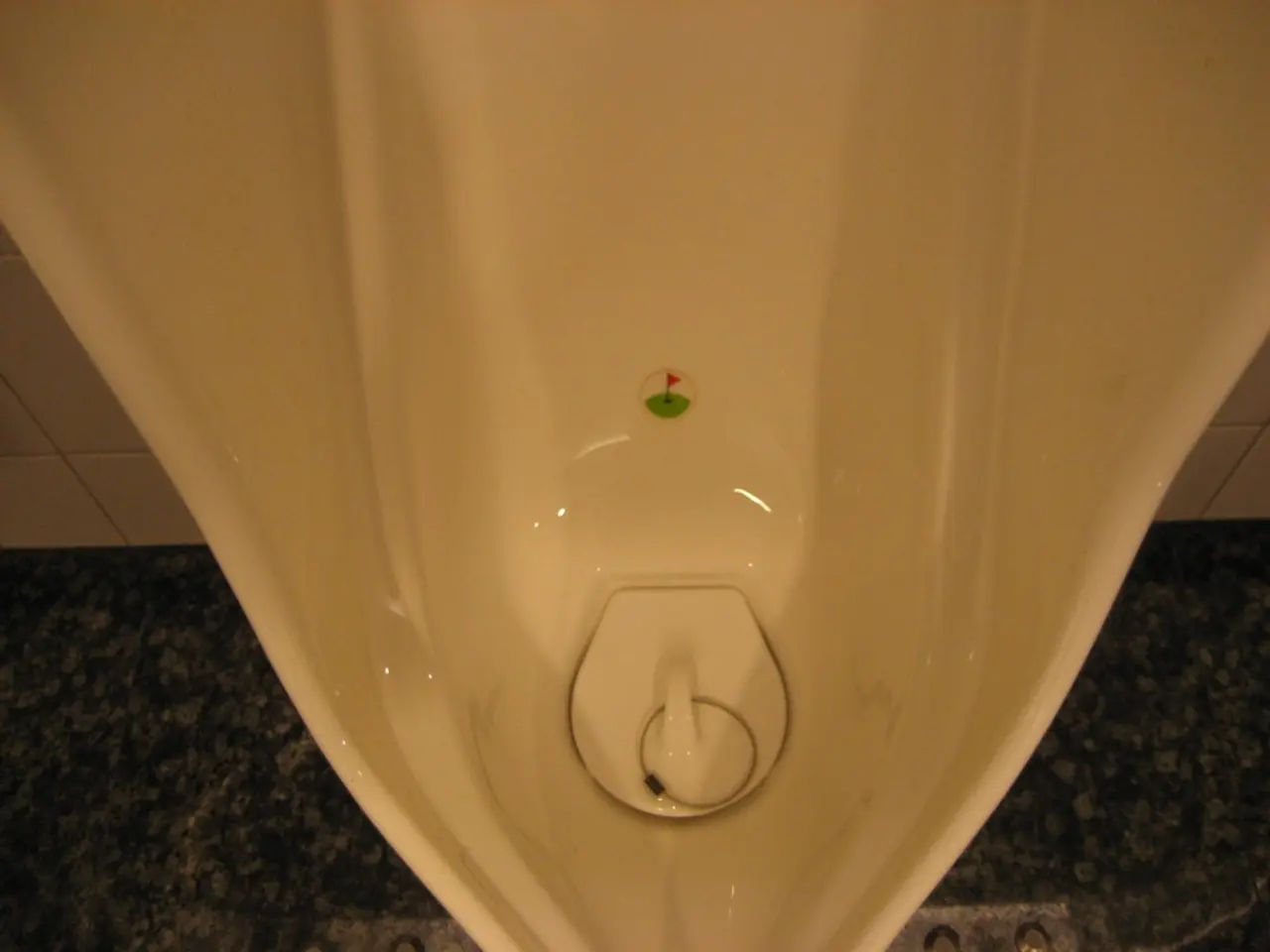Spasms in the bladder: Origins, indications, and remedies
Bladder spasms, a common issue affecting millions of people, can be caused by a variety of conditions such as Overactive Bladder (OAB), Urinary Tract Infections (UTIs), diabetes, an enlarged prostate, interstitial cystitis, multiple sclerosis, Parkinson's disease, stroke, and some diuretic medications.
Fortunately, treatment options are available to help manage this condition and provide relief. Common treatments focus on addressing the underlying causes and managing symptoms through medication, physical therapy, and sometimes advanced interventions.
### Medications
Anticholinergic drugs, such as oxybutynin, tolterodine, and darifenacin, are often prescribed to relax the bladder wall, calming an overactive bladder and reducing spasms. Beta-3 adrenergic agonists like mirabegron help the bladder hold more urine and decrease spasms by relaxing the bladder muscle. For UTIs, antibiotics are critical to resolve infection-triggered spasms. Muscle relaxants or pain relievers may be used short-term to ease discomfort from spasms.
### Physical Therapy and Bladder Training
Pelvic floor physical therapy, involving exercises like Kegels, strengthen or relax muscles supporting the bladder, improving control. Bladder training involves creating a schedule to gradually increase the interval between urination, helping suppress urgent bladder contractions. Biofeedback therapy helps patients learn to relax bladder muscles more effectively.
### Advanced or Invasive Treatments
For severe or refractory cases, Botox injections into the bladder wall can help reduce spasms by calming bladder muscles, with effects being temporary and needing repeating. Nerve stimulation therapies, such as sacral nerve stimulation or tibial nerve stimulation, modulate nerve signals controlling the bladder. Surgery is rarely used, reserved for severe cases where the bladder may be enlarged surgically or urinary flow redirected.
### Additional Considerations
Lifestyle changes such as avoiding bladder irritants (spicy foods, caffeine, alcohol), adjusting fluid intake, and eating more fiber are often recommended first to reduce symptoms. Practicing pelvic floor exercises, like Kegels, may help reduce urine leakage. Urgency suppression techniques may help manage the urge to urinate. Electrical nerve stimulation may be recommended to send electrical pulses to the nerves that affect the bladder.
For those who regularly experience bladder spasms that lead to urinary incontinence, speaking with a doctor is crucial. Bladder spasms can be treated, with various approaches such as medications, surgical interventions, and lifestyle changes available to reduce their incidence and help a person feel comfortable again.
It's important to note that no changes in nutrition have been shown to reduce the incidence of urinary incontinence in the U.S. However, avoiding foods such as alcohol, tomatoes, caffeine, chocolate, and citrus drinks may help reduce bladder symptoms.
Approximately 30% of men and 40% of women in the United States experience symptoms of Overactive Bladder (OAB). If you are among them, remember that help is available, and with the right treatment, you can regain control and comfort.
- Asthma and other respiratory conditions may exacerbate bladder spasms, requiring attention to overall health-and-wellness.
- In addition to bladder spasms, chronic-diseases like multiple sclerosis (MS) and Parkinson's disease can affect urinaryhealth.
- Science continues to uncover new medical-conditions associated with bladder spasms, such as autoimmune-disorders and neurological-disorders.
- For those struggling with both bladder spasms and cance, seeking therapies-and-treatments may offer relief.
- Digital-health platforms are making it easier to monitor and manage conditions like OAB, ensuring that individuals prioritize their cardiovascular-health.
- When it comes to managing bladder spasms, understanding the different types of medication available, such as anticholinergic drugs, is essential.
- Medicare coverage for bladder spasm treatments varies, so it's crucial to discuss financial considerations with a healthcare provider.
- CBD oil, a popular wellness product, has been reported to help some individuals with bladder spasms, but more research is needed in this area.
- Diet also plays a role in urinaryhealth, with diets rich in fruits and vegetables promoting digestive-health and overall wellness.
- Caring for one's eye-health is equally important, as vision problems can lead to misinterpretations of bladder spasms.
- Limit alcohol consumption to avoid worsening hearing issues that could be mistaken for bladder spasms.
- Concerns about bladder spasms may affect mental-health, leading to anxiety or depression
- Regular exercise can help manage symptoms of OAB by strengthening the pelvic floor muscles.
- Fitness-and-exercise routines such as yoga or Pilates can also be beneficial for managing bladder spasms.
- Skin care plays a part in bladder health, as skin conditions like eczema or psoriasis can lead to scratching and bladder irritation.
- In some cases, chronic bladder spasms may require interventions like Botox injections or nerve stimulation therapies.
- Saving for medical expenses, including treatments for bladder spasms, is an essential part of personal-finance management.
- Utilizing interior-design techniques can help create a calming environment for managing stress and easing bladder spasms.
- Cooking at home can help control bladder irritants like spicy foods and caffeine.
- Adopting a sustainable-living lifestyle can help reduce the risk of certain chronic diseases and improve overall health.
- Budgeting for groceries and meals is crucial for maintaining a healthy-cooking routine that excludes bladder irritants.
- Building strong relationships through love-and-dating can improve overall mental-health and help alleviate stress related to bladder spasms.
- Proper care for pets can help reduce stress levels and contribute to emotional well-being, which can aid in managing bladder spasms.
- Taking advantage of deals-and-discounts on healthy foods and medical supplies can help manage the financial burden of treating bladder spasms.
- Traveling can offer opportunities for adventure-travel and cultural-travel, which may help reduce stress levels and improve mental-health.
- Careful car-maintenance is important for outdoor-living enthusiasts, as auto accidents can create additional stress related to bladder spasms.
- Reading informative books on bladder spasms can help individuals better understand their condition and available treatment options.
- Browsing product-reviews online can help individuals make informed decisions about treatments for bladder spasms.
- Electric vehicles provide eco-friendly transportation options for those with bladder spasms, reducing stress related to air pollution.
- Entertainment options such as movies-and-tv shows can offer escapism and stress relief for individuals with bladder spasms.
- Engaging in music and playing instruments can help manage stress levels and improve mental-health.
- Cultural-travel experiences can expose individuals to new global-cuisines, helping to find alternatives to bladder irritants.
- Managing finances effectively, including debt-management and budgeting, can help individuals afford necessary treatments for bladder spasms and maintain a comfortable lifestyle.








